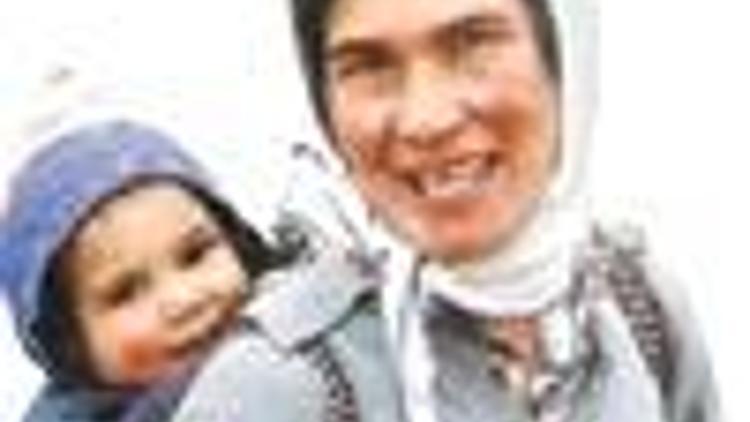Witnessing last of nomads
Güncelleme Tarihi:

ISTANBUL - On the heels of a book tour, Harald Böhmer’s photo journey is a memorial to nomadic people who have subsisted here for thousands of years-and a historical text for centuries to come
Harald Böhmer’s new book is an in-depth study of hundreds of people who were perhaps more difficult for him to find than to befriend. The unsuppressed joy evident in many of Böhmer’s 600 photos and descriptions is nonetheless haunting. Spanning 27 years of first-person documentation, "Nomads in Anatolia: Encounters with a Vanishing Culture" is testament to a way of life that for most nomadic people in Anatolia has already vanished. In this way, the book, now in English, is a sober memorial to thousands of years of a subsistent people in this land Ğ and a historicaltext that will be referred to hundreds of years from now.
Beginning most stories by saying, "Together with my wife..." Böhmer, 76, calls himself an ethno-tourist. He says many of their encounters and friendships began after they had pulled off the road and his wife Renate would head to the nomads’ tents where they were promptly invited in for tea.
A personal scholar
Moved as a young man by the life of nomads, he was drawn to interact with them on a personal level. As a science teacher at the German high school in Istanbul Ğ and a student of Turkish Ğ in the early 1960s, he began traveling around the country with his young family in their Volkswagen Beetle.
Böhmer says he was Ğ and is still Ğ fascinated by their textiles. Understating his interest perhaps, he and his wife Renate have dedicated the last 27 years to developing natural dyes to use in carpet weaving, a tradition that had been lost since the 19th century. Along the way they helped start Turkey’s first women’s cooperative. The Böhmers joke about how quickly they learned that carpets, no matter how traditional or natural, don’t sell themselves. It was their steadfast commitment to a Turkish art form and the women with the skills to revive it that sent them town to town across Europe and elsewhere to create a market abroad for the carpets dyed from plants that he, as a chemist, had reintroduced to the trade.
The Böhmers took part in the daily lives Ğ often for weeks at a time Ğ of nomadic and seminomadic groups across Anatolia. He made repeated trips that included visiting the same families in different seasons and decades across terrain that was sometimes impassable by car. These treks often started with complex maps or "a rough idea" of how to find the family in their location that changed with the seasons. The families he came to know best and those whose lives he documents in the book represent the Sarikecili, Karakoyunlu and the Akkoyunlu nomadic groups.
Life long trek to document nomads’ existence
His project, this book, is the culmination of a lifelong trek of his own to document with a keen eye the life of Anatolian nomads with diary entries, field notes, diagrams, photographs and videos for future generations. In his description of the nomadic lifestyle, Böhmer says nomads experience nature’s rhythm each day and in every season. Their possessions are limited to what they can carry: "functional decorative, and intentionally made as attractive as possible in quality and design Ğ apparently from an irresistible desire for beauty."
His ethno-biography comes across with skill and precision reminiscent of yurt living itself: His vivid depictions is often as colorful and as rigorous as the building, decorating, erecting, using and disassembling of the dome-like structures so central to their existence.
Territory, Pride & Reality
Josephine Powell, an enigmatic roving anthropologist Ğ and aficionada of Anatolian kilims Ğ was a friend and partner to the Böhmers for decades before her death last year. "She would introduce us to people we could reach only by leaving the car and walking 10 kilometers," Harald told the Daily News. Once after going as far as they could by car, they left a melon in the shade of the car and hiked to a site. Returning at dusk, they found a note left by a herder telling them that he had moved the melon to the top of the car to prevent the animals from eating it. The note went on to say that they should not worry because they were in the land of the Karakoyunlu people Ğ a group with a great deal of power in the region. Böhmer returned to that area regularly over the years.
In a matter of a few paragraphs about the Akkoyunlu tribe that once ruled Anatolia, Böhmer takes the reader from their victory over the Karakoyunlu, the Ottoman demolition of their cavalry, and finally to the Kurtan family whom he had come to know. In the eastern part of Antalya, the Kurtans and their nine children represent the last of the Akkoyunlu, still living a seminomadic existence.
"The Kurtans had also built a house, but they were renting it out and continuing to live in their tent near their sheep, even in winter," Böhmer wrote after another visit with them a few years ago.
"Nomads in Anatolia: Encounters with a Vanishing
Culture" by Harald Böhmer with Josephine Powell and Serife Atlihan is widely available in English.

